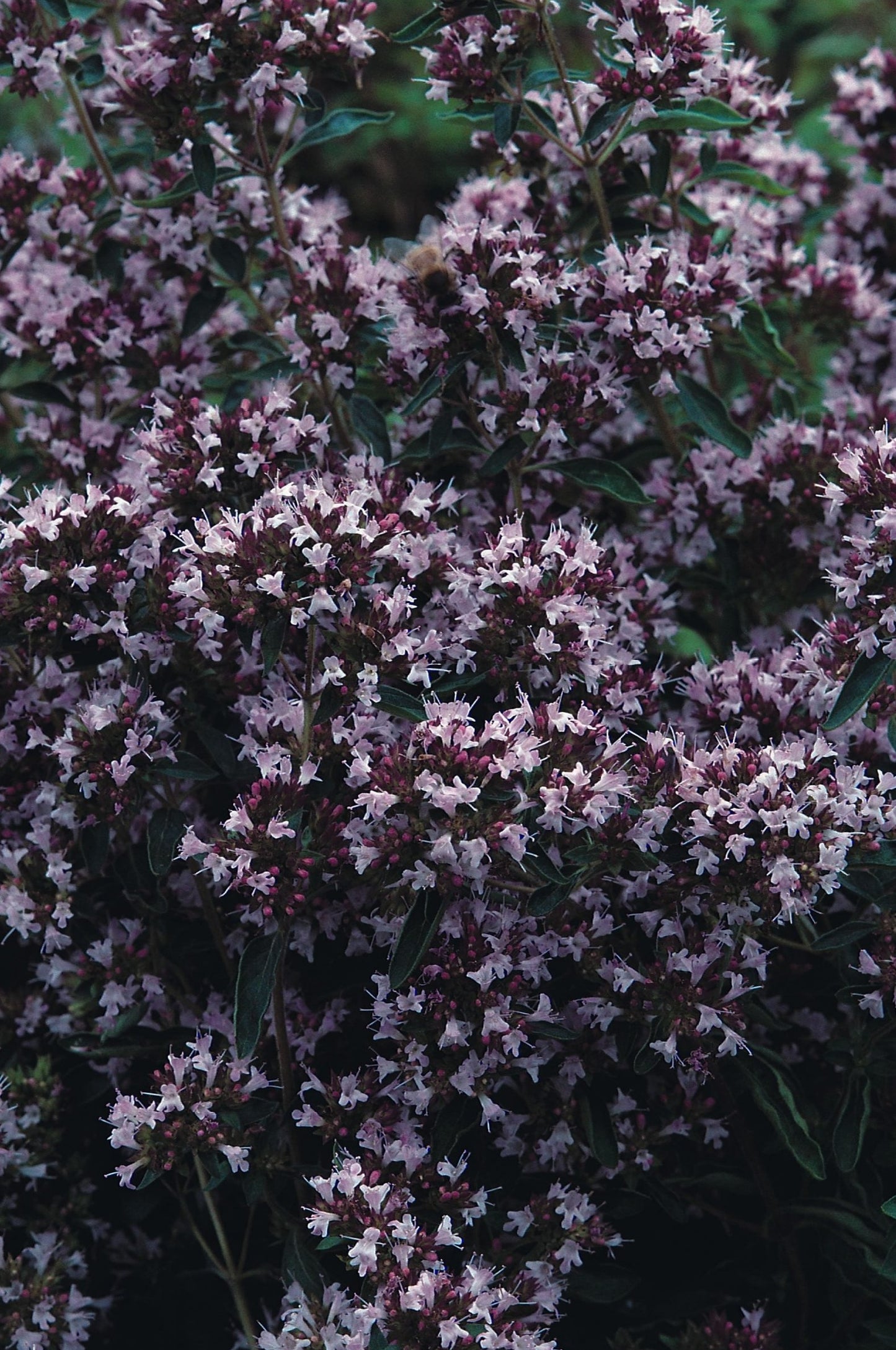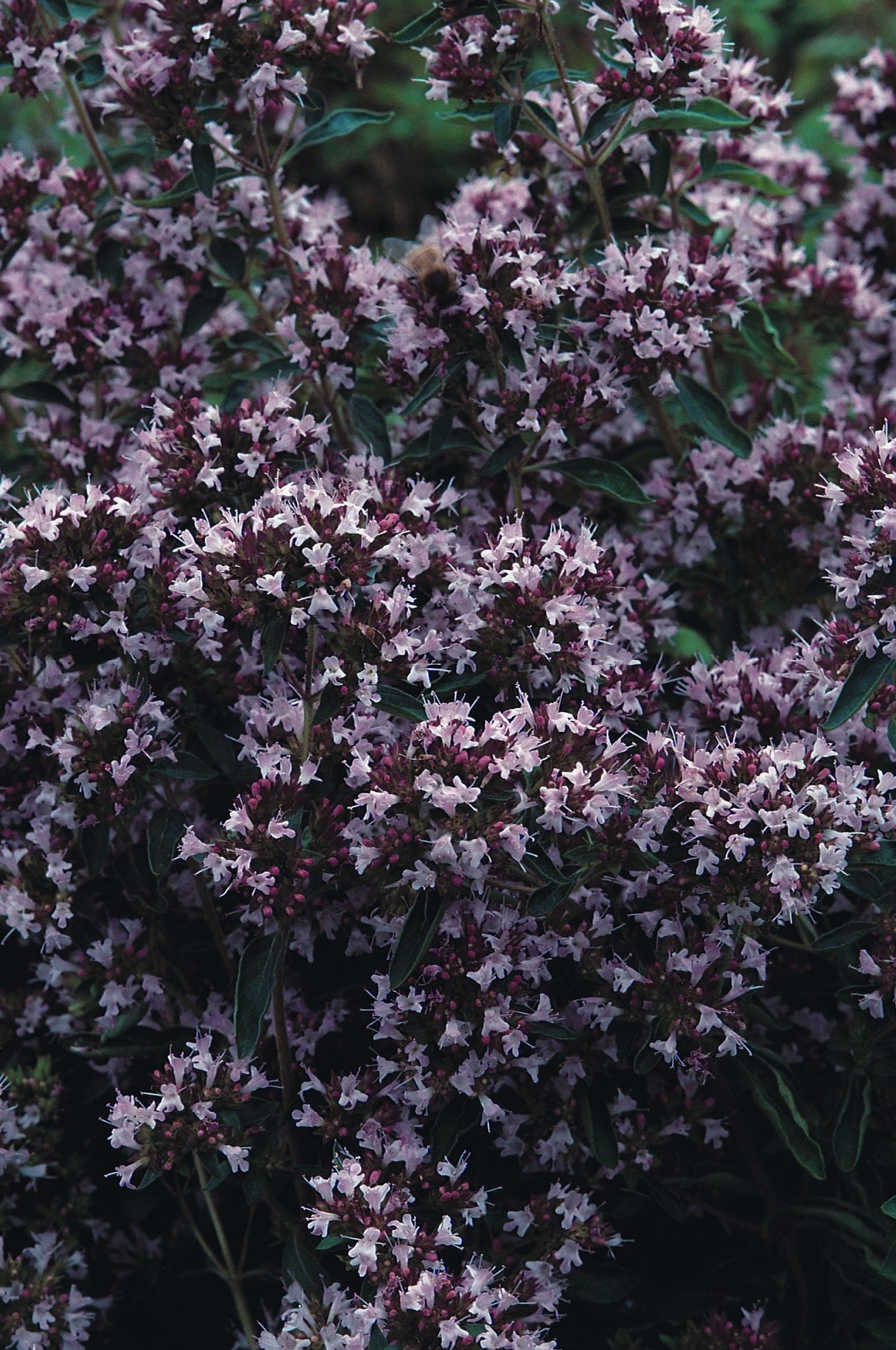Marjoram Pot
Marjoram Pot
Packet Size: 50 seeds
Couldn't load pickup availability
Pot Marjoram Origanum onites: aromatic, versatile, and bee-friendly!
This compact perennial (grows to around 20–40cm tall) brings fresh, zesty flavour from spring onwards. Its aromatic green leaves often form a low mat of greenery in winter (semi-evergreen), making it useful year-round in the garden or on a balcony.
In late summer, it bursts into clusters of tiny pinky-purple tubular flowers that are a magnet for pollinators – it's listed by the RHS as a top plant for bees. Better still, the leaves, stems, and flowers are all edible, making it a must-have for any kitchen gardener.
Perfect for borders, pots, or herb beds – and ideal for small spaces.
Big flavour, small footprint – grow Pot Marjoram anywhere you call home.
This variety is part of our naturally nurtured range, the seed comes from an organic source
🌱 Seasonal Growing Guide
SPRING:
- Sow the very fine seeds on the surface of the compost in a seed tray - do not cover.
- Provide a little bottom heat to help with germination.
- Keep the compost just slightly moist (not too wet).
- Once seedlings are large enough to handle, pot them up and grow on.
SUMMER
- Plant out in a sunny spot with good drainage (avoid waterlogged areas).
- Space about 25cm apart, or closer if using as an edging plant. Lightly harvest a few leaves in the first year.
- Trim plants after flowering to keep them tidy and encourage fresh growth.
- Divide established plants if needed
📌USES
GREAT FOR WILDLIFE
- A magnet for bees of all kinds, especially honey bees and short-tongued bumblebees.
- Loved by butterflies including the Gatekeeper, Common Blue, and Marbled White.
- A food plant for the endangered Large Blue butterfly and moths like the declining Lace Border.
- RHS-listed as excellent for pollinators—ideal for supporting native UK species.
EDIBLE
- Most think fresh is best you can also dry them or you can freeze the chopped leaves.
- From Pot Marjorm you will taste fresh, woody, citrusy & floral tones: a milder flavour than oregano, a little like thyme, but sweeter and with a stronger scent.
- The leaves, stems and flowers are all edible with the flowers making a delightful addition to a salad or as a garnish
- Mainly used for flavouring - add fresh leaves to pasta, pizza, salads, soups. It pairs particularly well with tomato dishes
- Dried marjoram is better for herb blends and marinades and for meat dishes add dried & crushed marjoram to mince before making meatballs
- The fresh or dried leaves can be brewed as a tea… you may prefer to add some honey to sweeten.
- Its flavour lasts longer in cooked dishes than other marjorams or oregano
IN THE GARDEN
- Spreading habit producing pinky-purple flowers in summer
- Combines well with other Mediterranean herbs in borders and raised beds. It will also grow well in containers on a sunny patio or in a greenhouse or conservatory Good for container planting
- Prefers full sun
- Well drained to dry soil
- Good drainage required to maintain good plant health. Sunny situation in winter
- Pinch out the tops and flowers to promote branching and leaf growth
HISTORICAL
- The Ancient Greeks thought Origanum onites was created by Aphrodite
- Hippocrates (credited with the code of ethics known as the Hippocratic Oath) knew Marjoram as an antiseptic
- To the Romans it was the herb of happiness, and was believed to increase lifespan
- It is thought to have spread to the British Isles during the Middle Ages – although much more likely to have arrived in Roman times
- It is known that Marjoram was not widely used in the USA until after World War II
MEDICINAL: see caution below
- Marjoram is popular in traditional and alternative medicine
- Historically the fresh or dried leaves were brewed as a tea, considered helpful to treat colds, coughs, and asthma, to aid digestion, help regulate menstrual cycles, increase milk supply during breastfeeding, and decrease blood pressure… currently colds/ flu, stomach upsets
- Not all of its historic uses are scientifically backed, the plant has verifiable medical use as containing antibacterial, antifungal and antimicrobial with dried Marjoram registering some anti-inflammatory properties
Caution: it is not advisable to consume Marjoram whilst pregnant and anybody wishing to use plants for medicinal effect are advised to consult their medical professional
Please Note: we do not promote the medicinal use of plants – guidance and information should be sought elsewhere.
OTHER
- The flowers, after cutting, can last three weeks in water
- An essential oil extracted from the leaves is used in perfumery
- Use in a pot pourri

Collapsible content
Sowing
- Mar
- Apr
- May
Harvesting / Flowering
- Jun
- Jul
- Aug
- Sep

